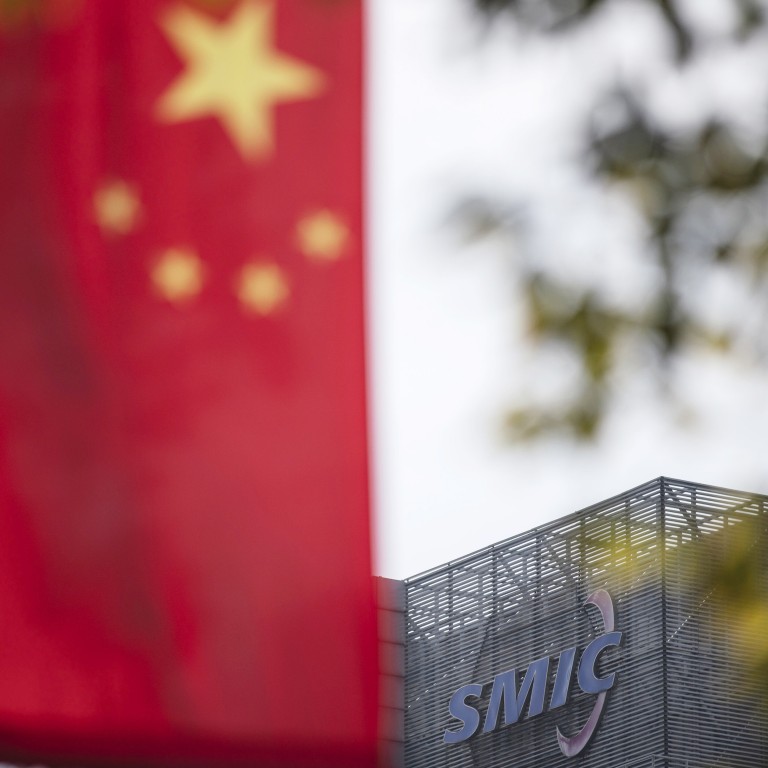
Can China innovate itself into a lead in the chip industry as Moore’s Law nears its physical limit?
- Analysts are divided on whether China can jump ahead in chip technology as Moore’s Law approaches physical limit
- China remains years behind companies, such as TSMC, the world’s biggest chip foundry, in current chip-making technologies
As Moore’s Law, which refers to a prediction by Intel’s co-founder Gordon Moore that the number of transistors on an integrated circuit would double roughly every two years, potentially approaches its physical limit, analysts are divided on whether China can seize an opportunity to develop disruptive semiconductor technology to get ahead.
China’s vice-premier Liu He, trusted aide to President Xi Jinping, recently gathered the country’s top technology officials together to discuss plans for the next five years, and one of the areas looked at was “potential disruptive semiconductor technologies” in a post Moore’s Law world, according to a weekend report by state news agency Xinhua.
The end of Moore’s Law has been predicted for a decade, but the naysayers have been proven wrong time and again as chip makers have found different ways to squeeze more performance out of chips, albeit at a slower pace than Gordon Moore’s original prediction in 1965. However, with cutting-edge chip nodes reaching 2-nanometres (nm), many analysts say the door is now open for innovators, such as China, to catch up with existing global chip leaders.
China remains years behind companies such as Taiwan Semiconductor Manufacturing Co (TSMC), the world’s biggest chip foundry, in current chip manufacturing capabilities but there is always a chance for a paradigm shift. This could come via “advanced packaging”, in which separate chips are combined into a powerful new set, or via so-called “third-generation semiconductors” in which new materials such as silicon carbide (SiC) and gallium nitride (GaN) could be used as base materials in chip production.

Bai Lei, a Shanghai-based IC designer, said China could have a chance in carbon-based semiconductors since its current technology level is on par with global peers. “Compared with silicon, carbon has better performance in heat transfer and heat dissipation,” said Bai. “In this regard China and the world are at the same level, China may even be slightly ahead.”
Jin Yufeng, a professor at Peking University’s School of Electronics Engineering and Computer Science, said during a recent chip exhibition in Chongqing that advanced packaging was China’s best shot to drive semiconductor development if it cannot secure advanced lithography systems.
But many analysts say China faces a tough battle to cut its reliance on US semiconductor technologies as American and European businesses remain dominant in chip design tools and critical materials.

05:57
SCMP Explains: China’s five-year plans that map out the government priorities for development
“The overall level of China’s semiconductor companies when it comes to advanced packaging and GaN lag behind global advanced players,” said Richard Chen, president of applied technologies at Hangzhou-based Ferrotec Group, a silicon wafer manufacturer.
Xin Yang, a semiconductor analyst with a major Chinese commercial bank, said it would be wrong to expect China to take the lead in the semiconductor industry as Moore’s Law slows, as the US is also the current leader in third-generation semiconductor technology.
And not everyone is signed up to the end of Moore’s Law. On the same day that Liu was exploring China’s disruptive technologies with technology officials, TSMC announced that it had found a way to process semiconductor nodes smaller than 1-nm.
TMSC listed “continued development of leading-edge technologies at a pace consistent with Moore’s Law” as one of its long-term business goals in its 2020 annual report. IBM also said this month that it has achieved a breakthrough in 2-nm chip technology.
As such, China’s game of catch-up could prove fierce.
“I don’t know how long it will take China to catch up … but it will take time,” said Ferrotec’s Chen, adding that if China’s industry works together as one, then at least it will “stand a better chance”.

